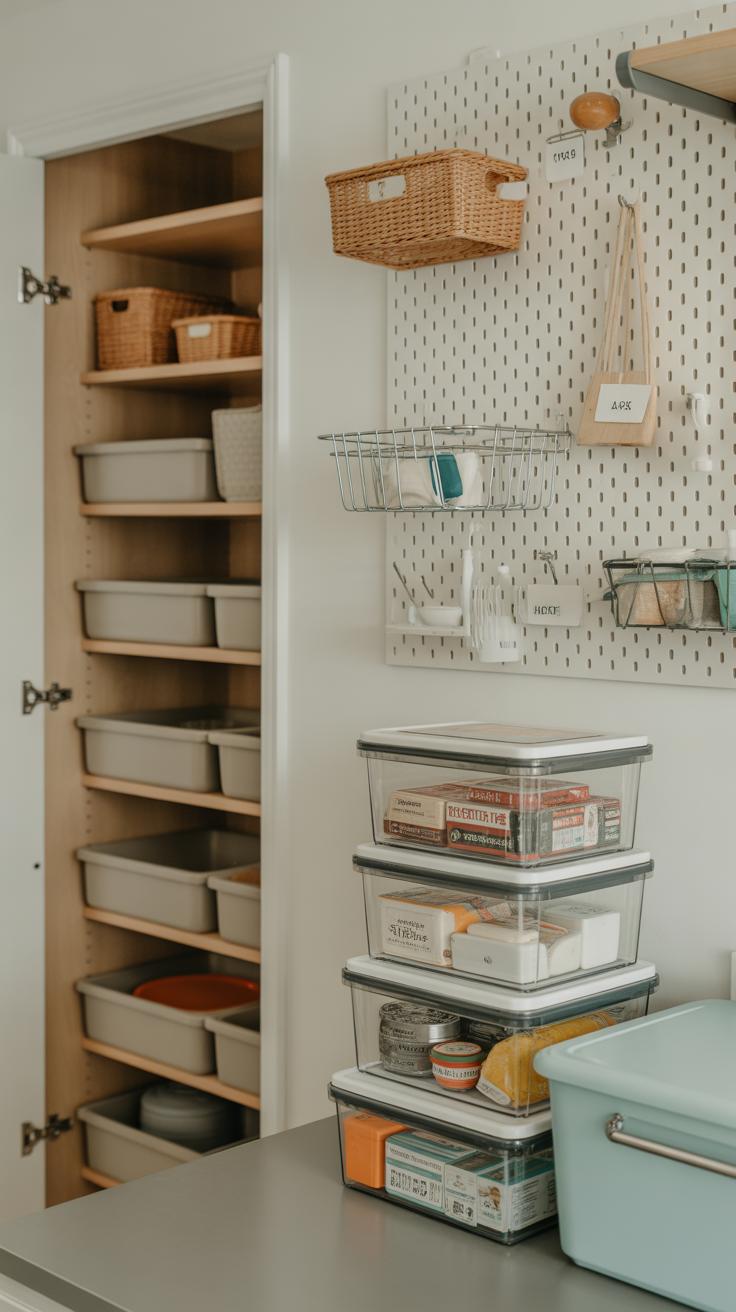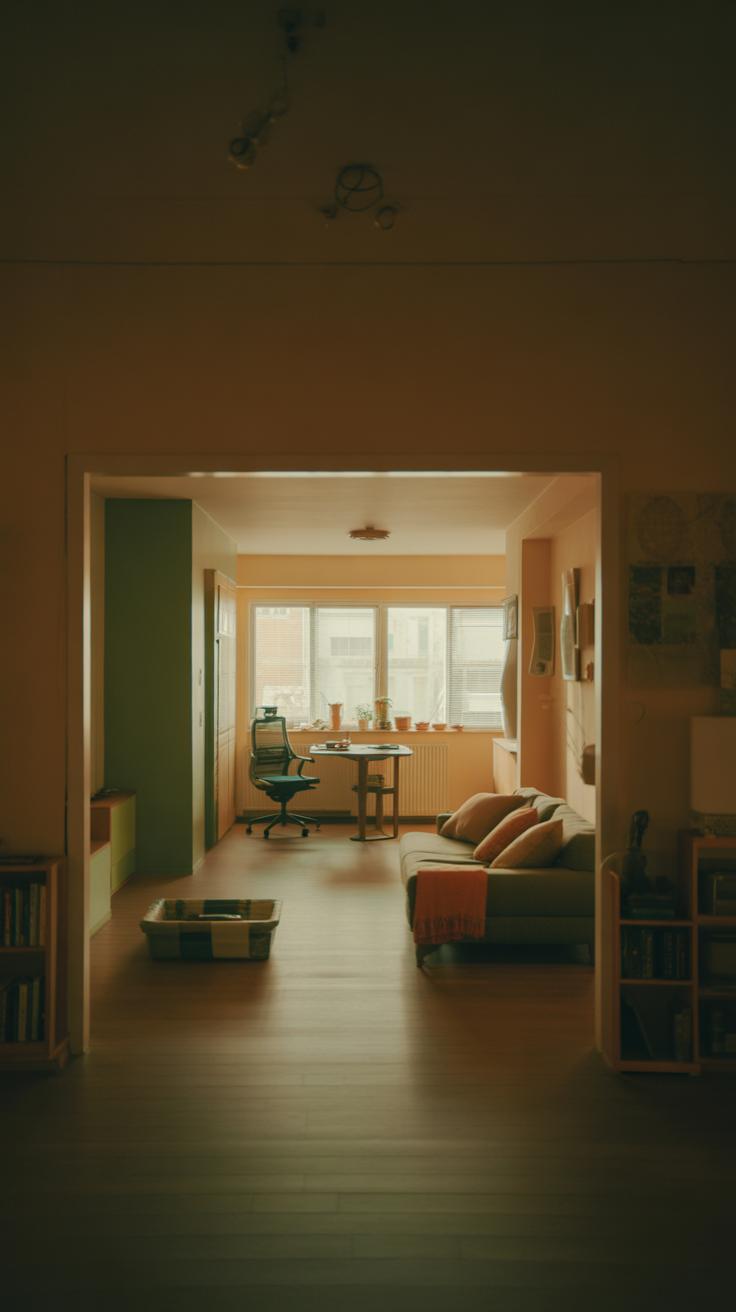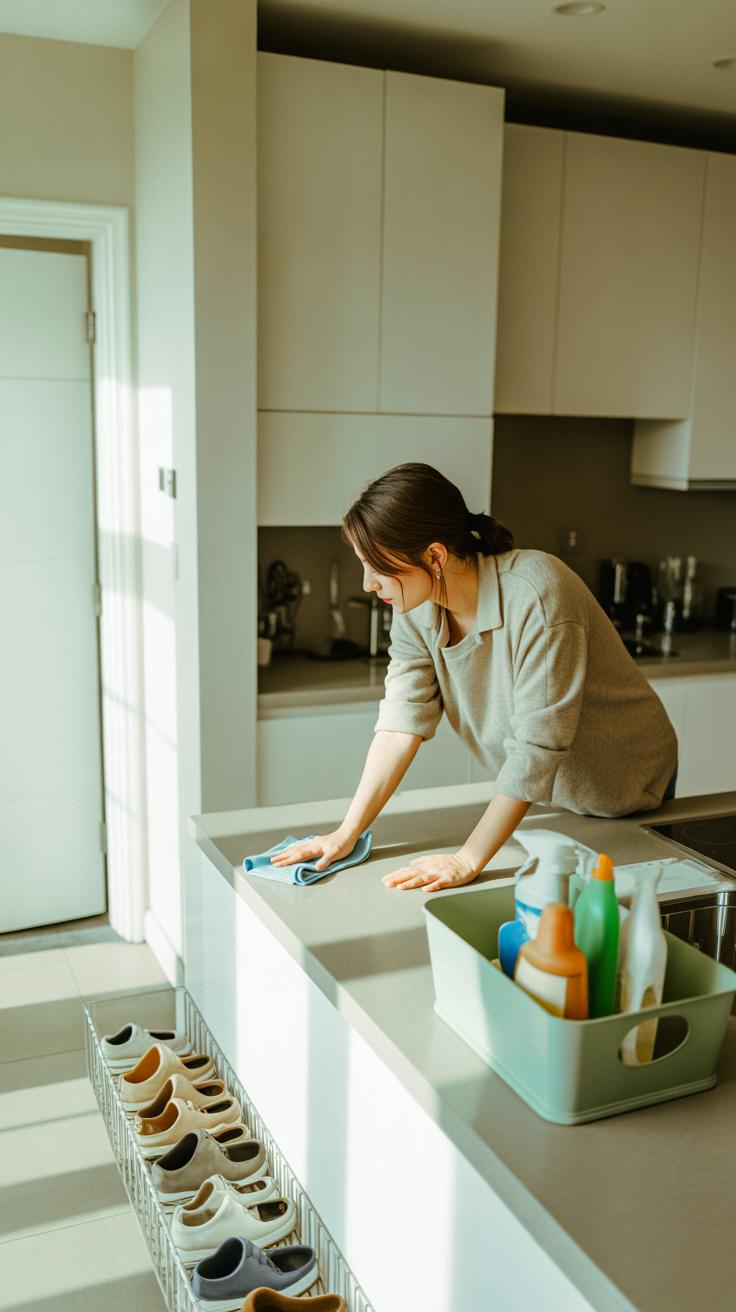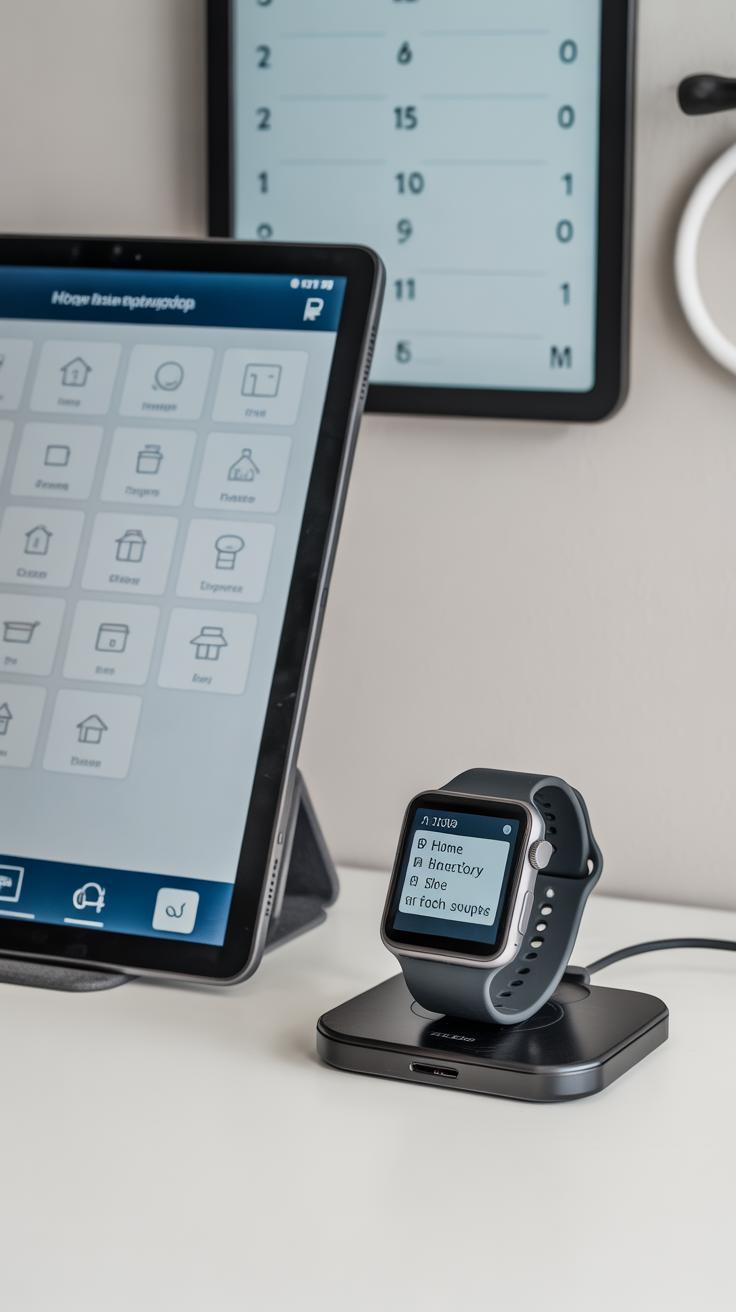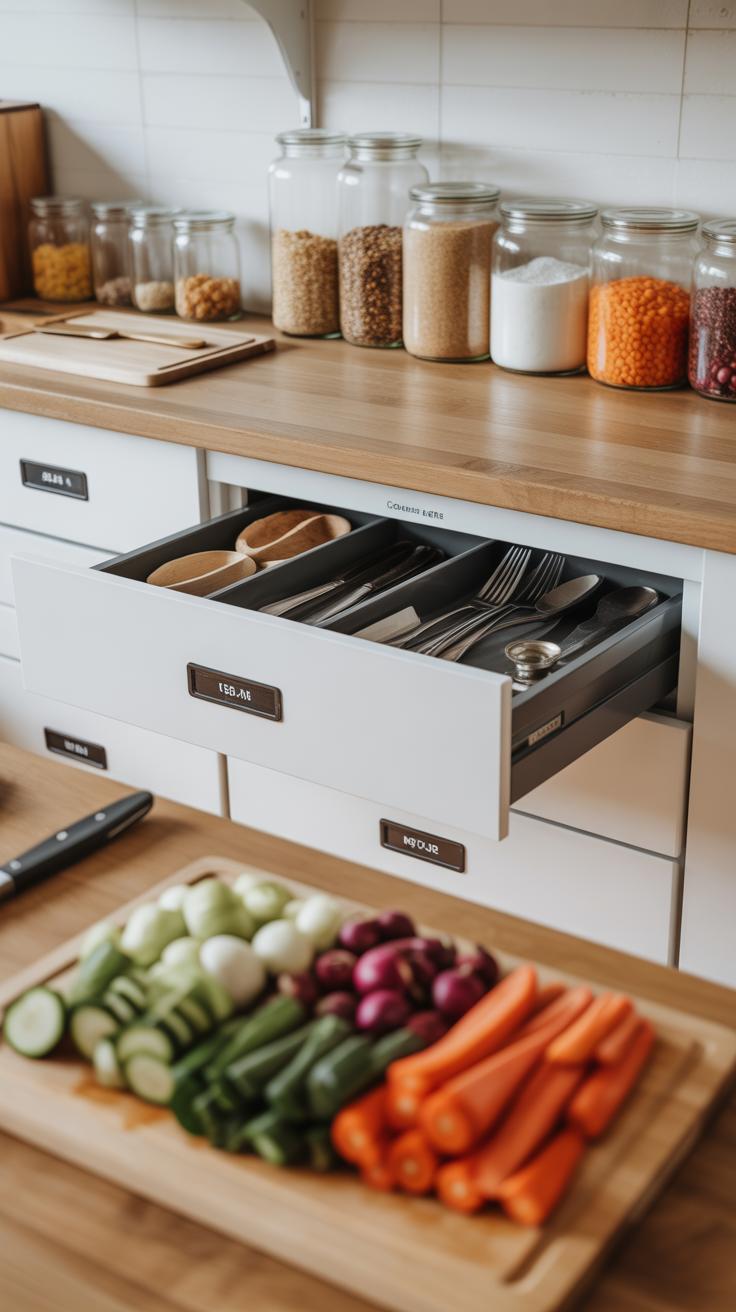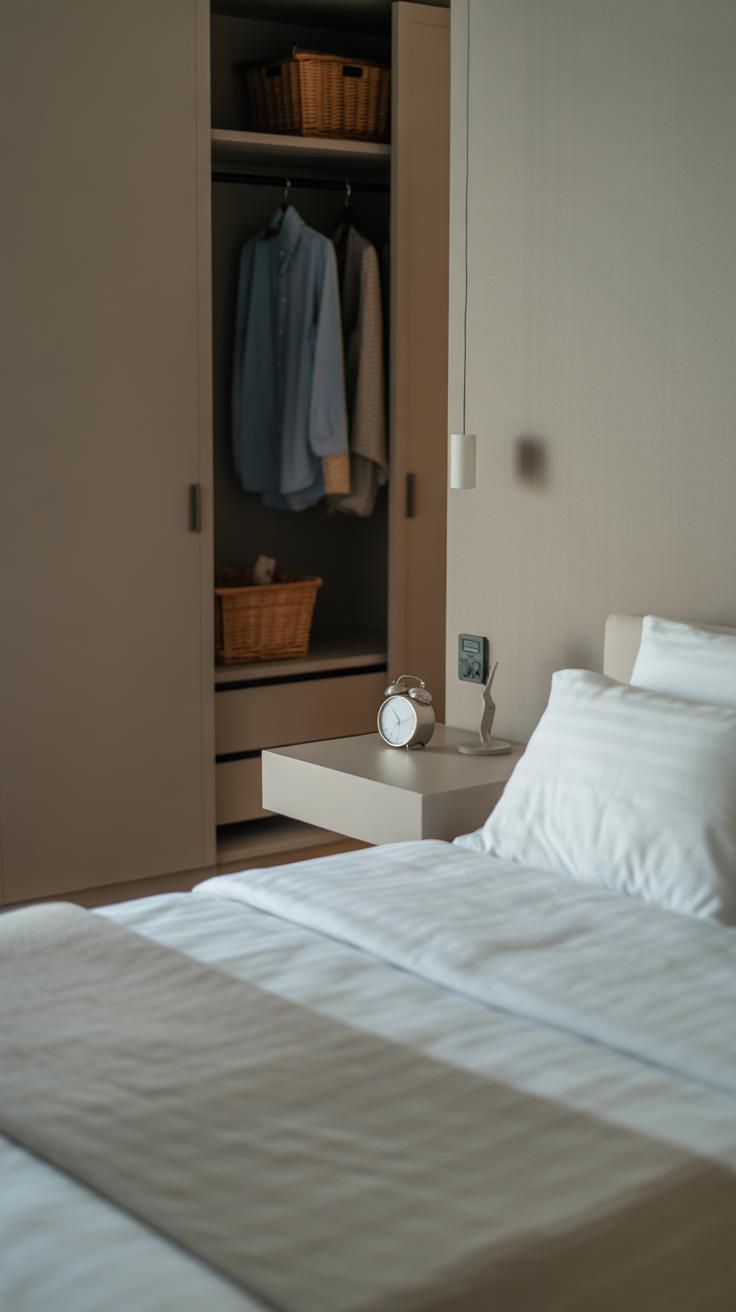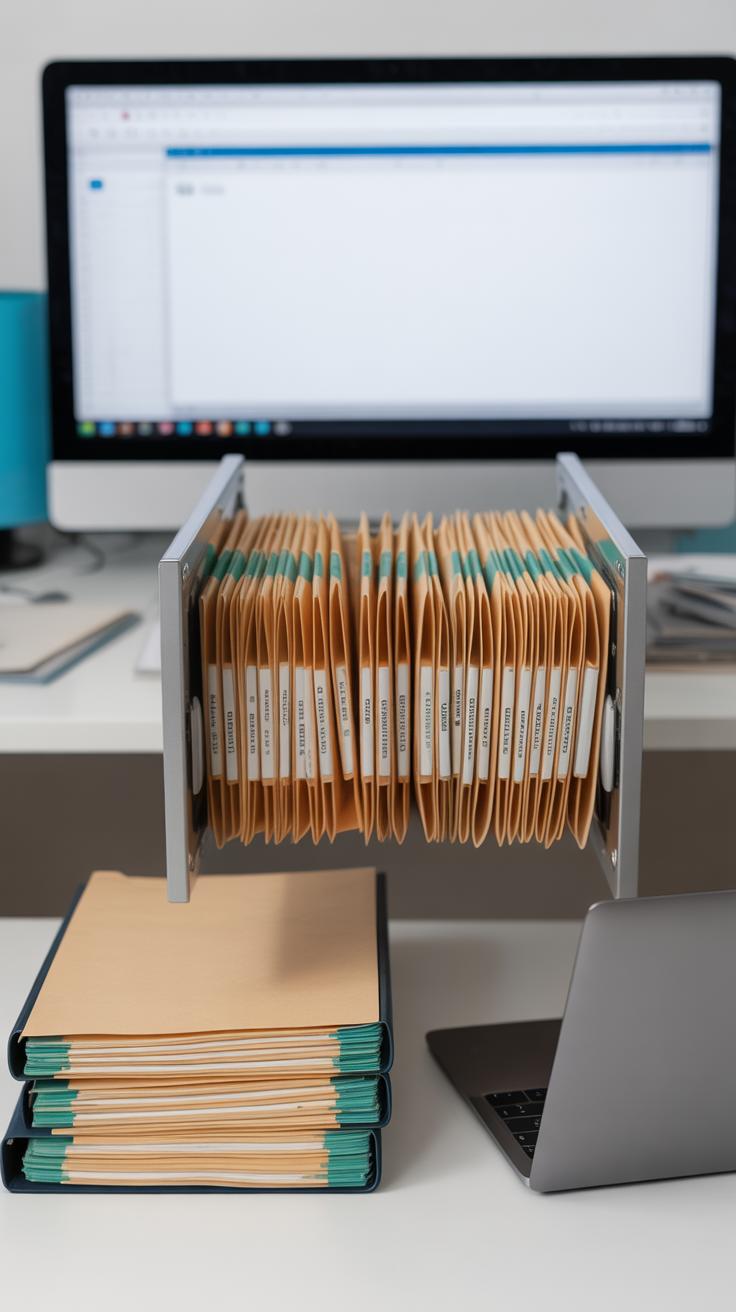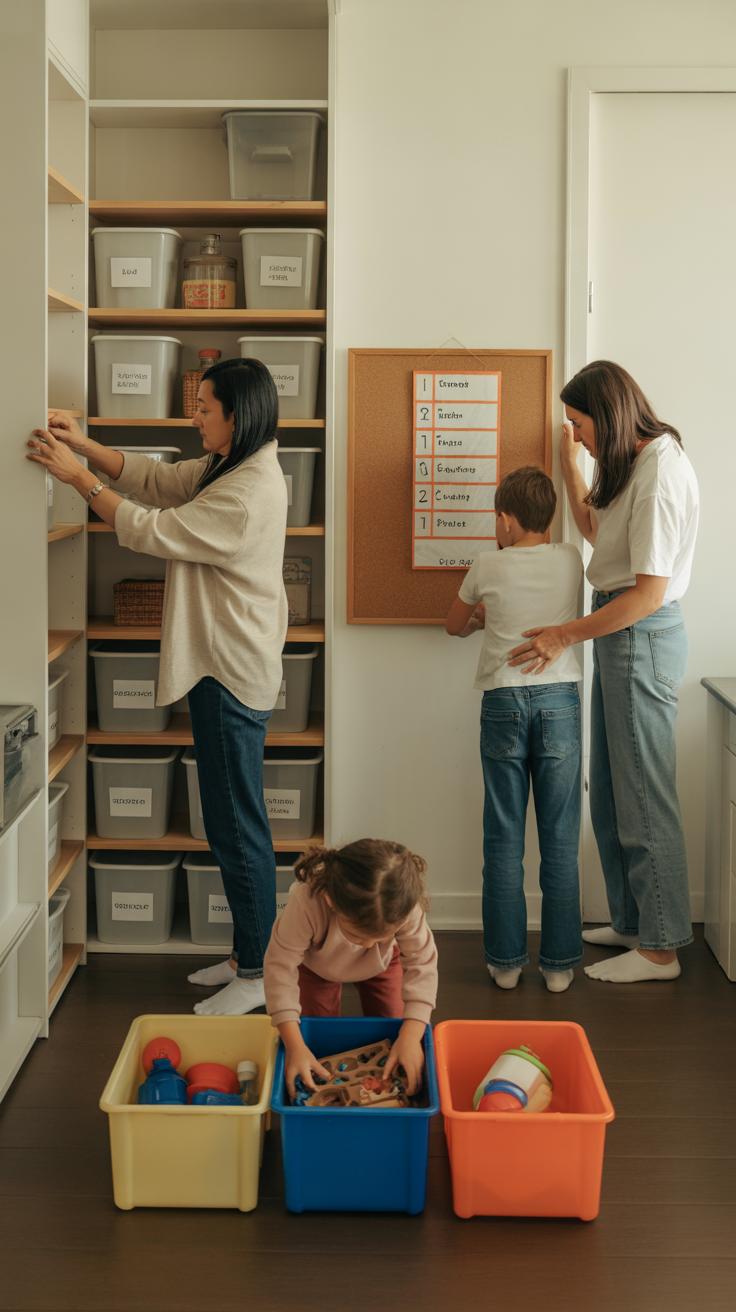Introduction
Living in an organized home makes daily life easier. When everything has its place, you can find what you need quickly and reduce stress. This article explores essential home organization hacks you can start using today to make your life effortless.
You will learn how to declutter effectively, arrange your spaces to suit your lifestyle, and keep your home tidy with simple routines. These easy tips help you enjoy your home more and spend less time cleaning and searching.
Understanding the Importance of Decluttering
Decluttering is often the first step people overlook, but it really sets the foundation for any home organization effort. When your space is filled with unnecessary things, it doesn’t just crowd your rooms—it crowds your mind. You might notice feeling restless or distracted even when sitting in your own living room. That little pile of papers or those extra clothes you’ve been meaning to sort out can quietly add mental strain without you realizing it.
Clutter disrupts routines. Searching for keys, shuffling through messes, or not having clear surfaces to work on creates a constant undercurrent of frustration. Sometimes, you just don’t want to spend time at home because it feels chaotic. That nagging chaos can linger in your thoughts, making it harder to focus or relax.
To start decluttering, try these simple moves: identify one small area, like a single drawer or a corner of a room. Sort items into three groups—keep, donate, and toss. Be honest. Ask yourself, when was the last time you used this? If it’s been more than a year, it’s likely safe to let go. Set a timer for 15 minutes, and see how much you can clear. Just a few minutes can break the inertia.
What Happens When Your Home is Cluttered
Clutter affects comfort in ways you probably don’t notice right away. For example, you might find yourself constantly shifting things just to find a clean spot to put down your coffee or your laptop. It can even make it difficult to relax in your own space, because the mess demands attention, whether you want it or not.
Think about how frustrating it feels when you can’t find your phone charger or misplace a favorite book. These small struggles add up, turning simple tasks into tedious hunts. You might avoid inviting friends over or dread cleaning up because it seems overwhelming—exactly because clutter builds walls, both physical and mental.
Easy Ways to Begin Decluttering Today
Starting is, perhaps, the hardest part, but breaking it down helps. Focus on specific areas rather than the whole house—or you’ll risk feeling paralyzed. Here are some tips:
- Pick a target spot, like a kitchen drawer or a bathroom counter.
- Create three boxes or bags: one for items to keep, one for donate, and another for trash.
- Set a small, achievable goal: maybe fifteen minutes or one box filled.
- Be realistic. Not everything has to be perfect immediately.
- Ask yourself whether items add value or just take up space.
Remember, decluttering doesn’t have to be a huge project tackled all at once. Little steps add up. Sometimes, just clearing off a tabletop can change how you feel about a room. You don’t need to decide the fate of every item immediately—just start moving things around. The process itself can reveal what really matters, and what you can live without.
Creating Functional Storage Solutions
Smart storage solutions do more than just keep things tidy—they change how you live in your space. Shelves, bins, and drawer organizers can turn chaotic piles into easy-to-navigate systems. For example, open shelves not only display your favorite items but also encourage you to keep things orderly, since everything’s visible. Bins can corral smaller items that otherwise get lost in drawers or cupboards, making it easier to find what you need without hunting.
Drawer organizers separate clutter and keep similar items together. I once started using simple trays in my kitchen drawers, and it saved me from endlessly digging for utensils. It feels like a small change, but it really rewires daily habits in a subtle way.
When you think about your storage, don’t just look for containers—look for how those solutions fit your routines. That might mean tall, narrow shelves for a small bathroom or stackable bins in a closet where space is tight. The goal is to keep pathways clear and reduce wasted space without overcrowding.
Choosing the Right Storage for Your Needs
No two homes or habits are the same, so storage choices should reflect your life, not just your rooms. In a tiny apartment, for example, bulky storage might feel overwhelming rather than helpful. You might prefer slim shelves or under-bed boxes that don’t take up floor space. But if you have a larger home, investing in more substantial units like wardrobes with adjustable shelves can make a difference.
Think about how often you use certain things. If you rarely touch seasonal clothing, a labeled bin tucked away might suffice. But everyday items deserve easier access. Affordable options like plastic stackable bins, wire racks, and adhesive hooks are easy to find and adapt. You don’t need fancy gear to get organized—sometimes simple and inexpensive works best.
Organizing Storage to Save Time
Labels help, and not everyone loves labeling, but it’s worth trying. It cut my search time in half when I labeled bins in my laundry room, even if the labels were handwritten and a bit crooked. Categorize items logically: group similar things, separate what belongs in different rooms, or sort by frequency of use.
Keep everyday items front and center. For instance, in your kitchen, place frequently used spices or utensils in accessible containers or shelves, while rarer appliances go higher up. When storage is organized by need and use, it just feels easier to keep everything in order. Also, think about clear containers for quick visual access—sometimes seeing what’s inside avoids extra opening and checking.
In the end, the right storage setup saves time and, really, a bit of frustration. You might not get it perfect on the first try—but your storage should evolve with you. What’s awkward or unused one day could be rearranged next week to work better, so don’t hesitate to experiment a little.
Designing Zones for Different Activities
Explain the benefit of dividing your home into zones for various activities like relaxing, working, and eating
Splitting your home into specific zones can bring a surprising kind of order to daily life. When each area is dedicated to a particular activity—like a spot for work, a corner for relaxing, or a space for meals—it becomes easier to focus and switch between tasks. It might sound a bit obvious, but having a clear separation reduces confusion. You think of your home less as a jumble of purposes and more as distinct spaces with distinct needs. This clarity often makes your environment feel more manageable, even if the zones aren’t dramatically marked off. On a practical level, zoning also encourages keeping only what’s relevant nearby, which cuts down on distractions and helps maintain calm.
How to Identify Your Home’s Activity Zones
Sometimes, the zones exist naturally without much thought. For example, a favorite armchair surrounded by books becomes a reading nook, while a kitchen table might double as your workspace. But you may need to be intentional about claiming these spots. To find your zones, ask yourself: Where do I spend most of my time doing specific tasks? Where in the home do certain activities naturally gather? Consider:
- A quiet corner or a window seat as a reading spot
- A compact desk or a section of your dining table dedicated to work
- A dining area clearly set for meals, away from screens or clutter
Sometimes, zones overlap, and that’s okay. Just try to keep the main purpose clear, so you’re not juggling too many tasks in the same space.
Arranging Zones to Reduce Chaos
Once you know each zone, arrange its contents thoughtfully. Keep items linked to the activity close at hand—for instance, place notebooks, pens, and chargers neatly around your workspace. A relaxing zone might have cozy blankets and reading glasses nearby. It’s tempting to cram a handful of unrelated things into these zones, but that often leads to visual and mental clutter. Try to resist that urge. A zone that’s too crowded with miscellaneous stuff will feel chaotic rather than calming. Instead, store unrelated items elsewhere. The goal is to have each zone clearly defined and ready to support its main function without distractions.
Maintaining Your Organized Home Daily
Keeping your home organized doesn’t need to feel like a huge chore every day. In fact, small daily routines can make a big difference. When you spend just a few minutes tidying each day, it prevents clutter from building up in unexpected places. You might think a quick reset won’t matter much, but it really adds up over time.
Small Daily Tasks to Prevent Big Messes
Try these simple habits that only take a minute or two but save you from dealing with overwhelming messes later:
- Put things back in their designated spot right after you use them. That remote control? Don’t just set it on the couch—return it to its basket.
- Wipe down kitchen counters or bathroom sinks briefly each evening. It’s not about deep cleaning, just a quick swipe to keep surfaces fresh.
- Sort through any mail or papers every day. Toss what’s unnecessary immediately rather than piling it up “for later.”
- Hang or fold clothes as soon as you take them off. Piling them on a chair only delays the inevitable.
These small actions might feel like tiny drops in the bucket, but really, they stop your home from feeling out of control.
Setting a Weekly Check-In for Organization
Beyond daily habits, I find a weekly review genuinely helpful. You don’t have to make it rigid—just a casual once-a-week glance over your spaces, maybe on Sunday afternoon or whenever you have a moment.
During that time, consider doing things like:
- Checking storage spots for things that don’t belong or need to be relocated.
- Tidying one “zone” at a time rather than trying to tackle the whole house at once.
- Refreshing any bins or drawers by decluttering or reorganizing slightly to keep them functional.
Sometimes it’s surprising what shows up when you slow down and look more carefully. Does that box in the corner still make sense? Could something be donated or recycled? These weekly check-ins don’t have to be perfect. They’re just about staying mindful and keeping your space aligned with your needs.
Using Technology and Apps to Stay Organized
Apps for Decluttering and Planning
Technology can feel overwhelming when you’re trying to clear clutter, but certain apps actually make the process smoother. For example, apps like Sortly and Nest Egg let you create digital inventories of your belongings. You snap pictures, add notes, and easily track what you own without digging through boxes every time. It’s surprisingly calming to see everything visually mapped out, though sometimes entering all the details feels like a chore itself.
Then there are apps like Todoist or Trello that work well for planning your sorting projects. Breaking down an overwhelming space into smaller tasks gets less intimidating when you can check things off your list on your phone. Personally, I find it helpful to set deadlines or reminders, even if I don’t always meet them exactly. Maybe that’s just me, but having a plan visible tends to keep me from procrastinating for too long.
How Technology Saves Time and Effort
Using digital reminders and lists reduces the chance of forgetting important organizing steps. Your phone can prompt you to tackle your piling mail or revisit a donated box you meant to drop off. Can you imagine trying to manage all that mentally? It’s too easy to lose track. I think one nice side effect is less mental clutter—fewer “Did I do that?” moments.
Plus, syncing devices means your partner or family members can share tasks. If you’ve ever tried delegating organizing without a way to coordinate, you know it’s messy. Technology lets you stay on the same page, even if it’s just a quick note or photo shared in a group chat. Still, I wonder if relying on apps might sometimes make us less flexible in handling unexpected messes. But for routine stuff, they’re definitely handy tools to keep you moving forward.
Organizing the Kitchen for Easy Meal Prep
Sorting and Storing Kitchen Essentials
When it comes to your pantry, think practical use rather than just stacking cans or bags wherever there’s space. Group dry goods like pasta, rice, and flour together, ideally in clear, airtight containers. This not only keeps them fresh longer but also lets you see quickly when supplies run low — no more rummaging or forgotten bags at the back.
Spices deserve their own spot near your stove or prep area. Drawer inserts or tiered racks work well for visibility and access. Don’t tuck them too deep or too high, because reaching for rarely-used spices interrupts your cooking flow more than it helps.
Cookware and utensils should live close to where they get frequent use. For example, keep pots and pans near the stove, and utensils like spatulas and ladles in a jar on the counter or a pull-out drawer. A somewhat messy setup might actually feel more natural here—so you don’t waste time moving things back after each use.
Keeping Your Kitchen Clean While You Cook
One useful habit is cleaning incrementally, not only at the end. Rinse cutting boards or wash a bowl while something simmers. It feels slower at first, but cuts the massive clean-up time later. Plus, your workspace stays clearer, which might help you avoid accidents or spills.
Set up trash and recycling bins where they’re easy to reach without crowding you. Sometimes putting them too close to your main work area clutters the space, but too far away slows down the process. Experiment with placement—you might find awkward spots work better than expected.
Lastly, think about decluttering as you cook: toss wrappers and peelings immediately instead of setting them aside. This reduces surface clutter and keeps your kitchen feeling less chaotic. You might not be perfect at it every time, and that’s okay. The goal is something manageable, not flawless.
Organizing Bedrooms for Rest and Relaxation
Creating a calm bedroom isn’t just about picking the right colors or soft lighting. The way you organize your closet and nightstand, and how you reduce distractions, plays a huge role in making the space feel restful.
Simple Closet Tips to Find Clothes Quickly
Sorting your clothes by category or color can save those frustrating “what to wear” minutes. Try folding bulky items like sweaters and jeans instead of hanging them—it cuts down on wrinkles and frees up rod space.
When hanging clothes, face all hangers the same direction. I noticed it helps me quickly spot what’s clean and what needs washing.
- Group similar items (shirts, pants, dresses) together.
- Use slim hangers to gain extra space.
- Consider shelf dividers for stacked clothes.
- Keep everyday outfits at eye level and special occasions higher up.
Honestly, even a small tweak like rolling socks or underwear in drawers has made a surprising difference in finding things fast.
Creating a Sleep-Friendly Environment
Your bed placement really affects your mood and sleep quality. If possible, avoid positioning the bed directly under windows or near noisy electronics. Placing it against a solid wall, away from distractions, can help you feel grounded.
A clutter-free nightstand can reduce mental noise, too. Keep only essentials like a lamp, clock, or a book you’re currently reading.
- Choose soft, calming colors for linens and walls.
- Use blackout curtains or blinds to limit outside light.
- Remove or minimize screens and unrelated clutter from sight.
- Try gentle aromas like lavender to signal relaxation.
Sometimes, I find rearranging furniture even slightly—like angling a chair differently—shifts how relaxed the room feels. It’s subtle but worth playing with.
Could your bedroom benefit from less stuff and more thoughtful placement? The quiet order you create might be exactly what your mind needs to unwind at the end of the day.
Tackling Paper Clutter and Digital Files
Sorting Important Papers From Junk
Paper piles tend to grow faster than we expect, don’t they? To get a handle on them, start by separating what truly matters from what doesn’t. Create clear categories—think bills, receipts, warranties, medical records, and personal documents. Maybe just three or four piles to keep things simple. When you stumble on old catalogs or flyers, it’s usually safe to toss those, but bills and tax forms? Keep those a bit longer.
Consider setting up a physical filing system, like labeled folders or an accordion file. A small shredder nearby helps dispose of anything sensitive, which feels reassuring. Occasionally reviewing these files can prevent that slow creep of useless papers piling back up. It’s easy to forget what you’ve saved until it becomes overwhelming.
Organizing Digital Files for Easy Access
Digital clutter isn’t much different. A messy desktop can stress you out more than you think. Try naming files with dates and clear descriptions—“2023_Tax_Return” beats “document1” every time. Group related files into folders, maybe by year or project. You might want to create shortcuts for the ones you use most.
Backing up is something many put off, but it’s worth a minute now to avoid minutes of panic later. Use cloud storage or an external drive, and keep backups updated regularly. Sometimes I forget to do this myself, then scramble when something disappears. Think about what you’d need fast on a busy day and make sure it’s always easy to find.
Encouraging Everyone in the Household to Organize
Getting the whole family involved in organizing can feel tricky. Kids might resist, and other members might not see the point. Still, sharing this responsibility helps lighten your load and offers a chance to build teamwork. Sometimes, just asking for input changes the dynamic. You might find your teenager has good ideas—or at least is willing to help if it doesn’t take too long.
Assigning simple, clear tasks for each person avoids confusion. Saying “Everyone picks up their clothes” isn’t quite enough; instead, break it down: one empties the laundry basket, another folds towels. The key is making it manageable so nobody feels overwhelmed. Teamwork means dividing chores based on abilities and interest, even if that means some jobs get done with less enthusiasm.
Simple Tasks for Kids to Help at Home
Kids respond better when tasks fit their age and skills. Younger children can handle straightforward jobs, while older kids might take on a bit more responsibility. You want chores that teach habits and feel rewarding, not just busywork.
- Preschoolers: Sort toys by type or color, put books back on shelves, wipe low tables with a cloth.
- Elementary-age: Fold simple laundry pieces, set or clear the table, organize backpacks or shoes.
- Teens: Take out trash, help with meal prep and clean-up, tidy up common spaces.
Making these tasks fun sometimes works. Maybe a timer turns a chore into a quick race, or you offer small rewards. If it feels like a drag, motivation drops off fast. But when kids see their effort makes a difference, they often stick with it longer than you expect.
Creating a Family Routine for Organization
Keeping the house tidy isn’t a one-time deal. Without a routine, clutter sneaks back in. Setting up shared schedules or checklists gives everyone a clear picture of what needs doing and when. You might create a weekly chore chart posted where all can see. Or try a shared calendar on your phone to remind family members.
Be willing to adjust routines. Sometimes a task that made sense on Monday feels like a pain by Thursday. Asking for feedback can prevent burnout—and keeps everyone in the loop about what works and what doesn’t.
What if you start with just one or two habits? Like tidying the living room every evening or unloading the dishwasher before dinner. Small, consistent steps often lead to bigger changes over time, without anyone feeling nagged or overwhelmed.
Conclusions
Organizing your home does not require expensive tools or a lot of time. By decluttering and designing spaces that fit your needs, you create a welcoming environment that supports your day-to-day activities. You can take small steps that lead to big improvements.
Try these essential hacks to transform your home and your routine. Remember, a well-organized home helps you feel more in control and relaxed. Begin with one area and enjoy the benefits of living effortlessly.





